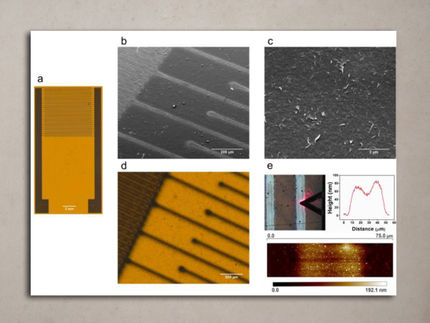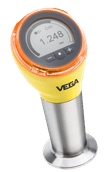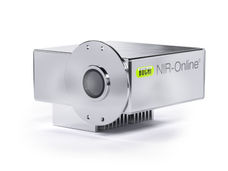Aerosol-printed graphene unveiled as low cost, faster food toxin sensor
They tested the sensors in a fish broth to see how effective they were at detecting histamines
Researchers in the USA have developed a graphene-based electrochemical sensor capable of detecting histamines (allergens) and toxins in food much faster than standard laboratory tests.

272447/ Pixabay
The team used aerosol-jet printing to create the sensor. The ability to change the pattern geometry on demand through software control allowed rapid prototyping and efficient optimization of the sensor layout.
Commenting on the findings, which are published today in the IOP Publishing journal 2D Materials, senior author Professor Mark Hersam, from Northwestern University, said: "We developed an aerosol-jet printable graphene ink to enable efficient exploration of different device designs, which was critical to optimizing the sensor response."
As an additive manufacturing method that only deposits material where it is needed and therefore minimizes waste, aerosol-jet-printed sensors are low-cost, straightforward to make, and portable. This could potentially enable their use in places where continuous on-site monitoring of food samples is needed to determine and maintain the quality of products, as well as other applications.
Senior author Professor Carmen Gomes, from Iowa State University, said: "Aerosol-jet printing was fundamental to the development of this sensor. Carbon nanomaterials like graphene have unique material properties such as high electrical conductivity, surface area, and biocompatibility that can significantly improve the performance of electrochemical sensors.
"But, since in-field electrochemical sensors are typically disposable, they need materials that are amenable to low-cost, high-throughput, and scalable manufacturing. Aerosol-jet printing gave us this."
The team created high-resolution interdigitated electrodes (IDEs) on flexible substrates, which they converted into histamine sensors by covalently linking monoclonal antibodies to oxygen moieties created on the graphene surface by a CO2 thermal annealing process.
They then tested the sensors in both a buffering solution (PBS) and fish broth, to see how effective they were at detecting histamines.
Co-author Kshama Parate, from Iowa State University, said: "We found the graphene biosensor could detect histamine in PBS and fish broth over toxicologically-relevant ranges of 6.25 to 100 parts per million (ppm) and 6.25 to 200 ppm, respectively, with similar detection limits of 2.52 ppm and 3.41 ppm, respectively. These sensor results are significant, as histamine levels over 50 ppm in fish can cause adverse health effects including severe allergic reactions - for example, scombroid food poisoning.
"Notably, the sensors also showed a quick response time of 33 minutes, without the need for pre-labelling and pre-treatment of the fish sample. This is a good deal faster than the equivalent laboratory tests."
The researchers also found the biosensor's sensitivity was not significantly affected by the non-specific adsorption of large protein molecules commonly found in food samples and used as blocking agents.
Senior author Dr Jonathan Claussen, from Iowa State University, said: "This type of biosensor could be used in food processing facilities, import and export ports, and supermarkets where continuous on-site monitoring of food samples is needed. This on-site testing will eliminate the need to send food samples for laboratory testing, which requires additional handling steps, increases time and cost to histamine analysis, and consequently increases the risk of foodborne illnesses and food wastage.
"It could also likely be used in other biosensing applications where rapid monitoring of target molecules is needed, as the sample pre-treatment is eliminated using the developed immunosensing protocol. Apart from sensing small allergen molecules such as histamine, it could be used to detect various targets such as cells and protein biomarkers. By switching the antibody immobilized on the sensor platform to one that is specific towards the detection of suitable biological target species, the sensor can further cater to specific applications. Examples include food pathogens (Salmonella spp.), fatal human diseases (cancer, HIV) or animal or plant diseases (avian influenza, Citrus tristeza)."





























































